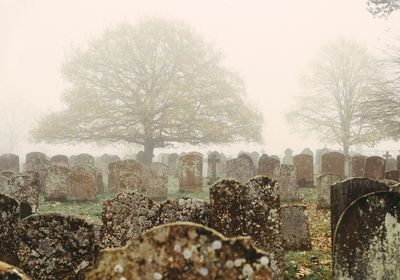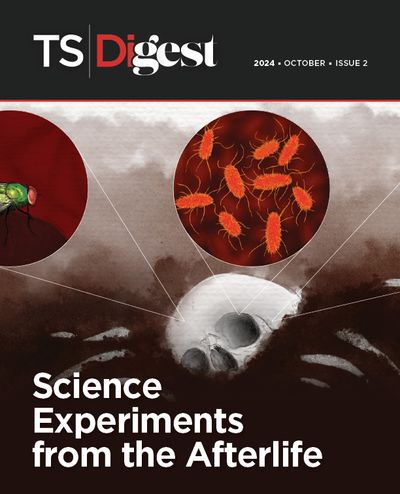Microbial Tales from the Crypt
Rock-dwelling bacteria and eukaryotes live in the company of the dead by feeding on tombstones.
Amongst the ghostly whispers, murky fog, and eerie stillness of a graveyard is a haunting tale of decay. The tombstones that scatter a cemetery hold more than just the memory of the dearly departed—they are teeming with life. Tess Brewer, a microbial ecologist at Ludwig Maximilian University of Munich, discussed the patchwork of microbes that drape headstones.
Which microbes like to live on tombstones?
Microbes live on basically every surface on the planet, including rock surfaces, which are tough environments to survive on. For one of my graduate research projects, we analyzed samples collected from tombstones in nine countries and found many known rock-dwellers, including bacteria and fungi that belong to the genera Sphingomonas, Hymenobacter, Pseudonocardiaceae, and Sporichthyaceae and the phyla Actinobacteria and Ascomycota.1 These microbes often have traits that help them survive environmental stressors like UV radiation and water scarcity.
How did rock type influence the kinds of microbes that inhabited the tombstone?
Although the communities varied by geographic location and climate, I was surprised by how the rock properties were key in determining what was growing on it. The microbes living on granite were very different from those living on limestone. In fact, granite tombstones in Belgium harbored communities that were more taxonomically similar to those on granite headstones in Maine than to those on neighboring limestone tombstones.
What is the effect of microbial colonization of rock surfaces?
Microbes can cause weathering, or the breakdown of rock. Bacteria, through normal metabolic processes, excrete acidic products that, depending on the rock type, can increase the local pH and eat away at the surface over time. Microbes can also impart mechanical forces—the contraction and expansion of biofilms and fungal hyphae can stress rock surfaces. Cemeteries offer a unique opportunity to study these kinds of weathering events since there are a variety of rock types and we can use the dates on the headstones as a rough estimate of time; however, microbes also wreak havoc on monuments and other stone surfaces.
- Brewer TE, Fierer N. Environ Microbiol. 2018;20(3):958-970.


